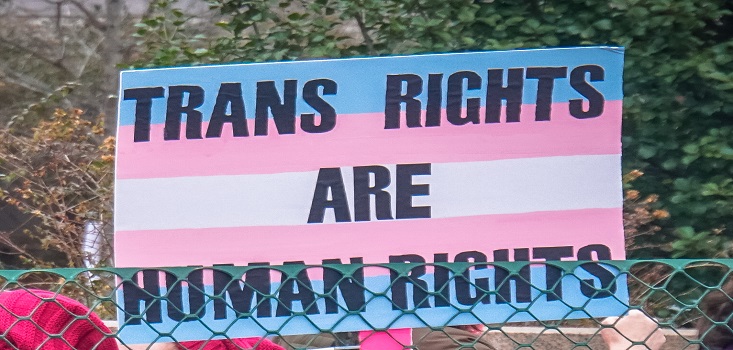School can be quite draining for many students around the globe. Constant classes that drag on for what seems like forever take a lot out of a high school student. That’s why school lunch is so important for so many students. They can get a chance to relax, destress, and fill up their stomachs before heading off to class again.
What a school has to offer for lunch is a big aspect of a learning atmosphere. If you’re able to fill yourself up with healthy, nutritional, and tasty food, you’ll be more ready for the rest of the school day. While, on the contrary, if a student is not able to access this nutritional food, and either ends up eating unhealthy and undesirable foods or just doesn’t eat food at all, it could hinder their performance in school. Some countries prioritize the importance of good school lunches for the youth there more than others. The quality of school lunches differs around the world due to multiple factors, but there is no doubt that certain countries rise to the top when it comes to it.
Japan: The Japanese school lunch program is considered to be one of the best, if not the best, in the world. There are many reasons as to why this is. For most Japanese schools, lunch is made fresh by cooks working at the school. Most of the time, lunches in this country come with fresh vegetables every single time. This is something that many schools in different countries lack. Oftentimes, school lunches may not have much nutritional value to it. But Japan has a high standard when it comes to healthy school lunches. This is why veggies are present almost everywhere, along with a type of soup.
But it’s not just the food that makes the lunch period in Japan so good. Unlike the U.S., Japan likes to take lunchtime to teach students about proper etiquette while eating, and how to have proper manners. This makes lunch in Japan very beneficial not just in the quality of food they are serving, but also in the environment in which they eat. Japan takes great pride in caring for a student’s ability to learn by truly understanding how big of an impact school lunch has on a student.
Finland: Something that Finland has, that Japan lacks, is free school lunch. In Finland, students attending pre-primary, primary, lower secondary, and upper secondary schools may enjoy healthy Finnish school food without having to bring money. Generally, a main course in Finland schools consists of fish or some sort of meat, paired with a side of vegetables. Just like Japan, Finland is on top of serving some sort of vegetable component in their school lunches, which is valuable to aid in a student’s performance in school. In Finland, giving young children the option to fill themselves up with nutritional and beneficial food is seen as an investment into the future. This mindset is what helps Finland have some of the best school lunches in the world.
South Korea: South Korea has a variety of food when it comes to school lunch. It is minimally processed and generally has low fat. The quality of food in this country is quite high, with the standard usually including some sort of soup along with rice. Sides differ from day to day. One factor as to why this country has such high-quality food for its students is that students are generally very hard-working, and the curriculum is tough. Because of this, their country has prioritized having filling school lunches so students can work to the very best of their ability.
Many countries do not have this in place, and instead decide to neglect the need for quality school food, even when students need it. This careful planning and consideration of the student’s workload in South Korea has made its name for its school food. People there understand that if someone is to work hard, they need to be digesting nutritional and filling food.
France: Something that sets the French apart from other countries when it comes to school lunch, is that it has four courses, starting from the age of 3. This makes this country’s school lunch very special, giving students 40% of their daily caloric intake just at school. All food that is served is freshly made and is reviewed by certified dieticians. Along with this very filling and nutritious food, students schooling in France have a similar lunch experience to the Japanese. With their several-course lunch, French students have specific manners and systems to which they enjoy their lunch. It’s quite orderly, and this paired with the fact that they get excellent quality food the majority of the time, the French school lunch experience tops many different countries in different categories.
Sweden: Swedish school food is very similar to Finland. All of the lunches are free and there is the Education Act in place to give school students nutritious, free food. The meals generally consist of a hot meal, along with a salad buffet, a bread spread, and some sort of refreshing drink. Sweden also has the value that school lunches play an important role in a student’s quality of work, and in turn, will better them when they become adults. This is similar to Finland’s look at school food, saying that it is an investment in the future. Sweden implemented the act to give all students free, healthy food in the 90’s, as most schools during the 70’s were already transitioning to this way of life.
There are many good reasons why giving out beneficial lunches is a good investment for countries that have the privilege of affording it. Direct effects such as increased performance in school by students are shown, as well as things such as students scoring better on end-of-year tests and exams. Countries such as Finland and Sweden have a good outlook on the school lunch system, interpreting it as something that will better the next generation, and that will have a positive effect on their countries in general. On top of this, students will appreciate the care that is taken in bettering their school experience.





























